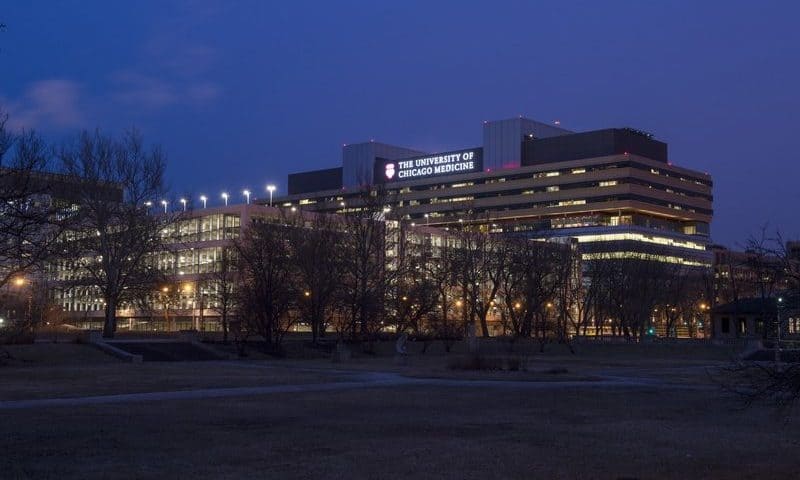Most therapies for vascular diseases aim to treat risk factors like high blood pressure and cholesterol rather than repairing the damaged blood vessels. Now, a team of researchers at the University of Chicago has shown that a targeted nanomedicine may be able to address vascular lesions.
The researchers designed a peptide that targets vascular cell adhesion molecule 1, which populates inflamed endothelial cells at high levels, and tested it in mouse models of atherosclerosis, a vascular disease in which the walls of blood vessels form plaques that clog the arteries. The vascular lesions shrank, they reported in the Proceedings of the National Academy of Sciences.
Now, the scientists who led the study planning to form a company to prepare the drug for clinical trials, said Matthew Tirrell, Ph.D., dean of the Pritzker School of Molecular Engineering, in an interview. “We can deliver an inflammation-reducing therapeutic oligonucleotide to sites of inflammation in the vasculature and we showed how this retards the progression of atherosclerotic plaques” in animals, Tirrell said.
Tirrell said the results are what the team anticipated, but they didn’t predict how effective the treatment could be.
“If you deliver the same oligonucleotide systemically, without packaging it in our nanoparticle, it also retards the development of atherosclerosis, but our way of doing it is … twice as effective. It really showed a clear benefit in delivering the therapeutic right to the site of inflammation in the vascular endothelium,” Tirrell said.
The researchers will likely test the treatment in other conditions first, because vascular disease can be hard to diagnose. One potential route would be to test the nanoparticles during angioplasty or stent insertions, which cause inflammation and disturbed blood flow. The team’s nanoparticles are able to assuage blood-flow issues in mouse models, Tirrell said. Another potential use for the drug is in arteriovenous fistulas, or AVFs, which connect arteries to veins and are critical for vascular access in kidney dialysis.
Other researchers working on new approaches to atherosclerosis include a team at Brigham and Women’s Hospital that found a long, noncoding RNA molecule played a role in the cellular aging of blood vessels. And a team at the University of Oxford discovered Plexin D1, part of a key cell-surface receptor group, that helps promote plaque formation, which leads to atherosclerosis.
The University of Chicago researchers believe the nanoparticle constitutes a platform technology that could show promise in reducing inflammation in other endothelial tissues. The team also has preliminary data on acute respiratory distress in COVID-19 and other respiratory diseases, Tirrell said.
The next step for the team is to design large-animal studies to prove out the treatment’s effectiveness in various complications of vascular disorders.

